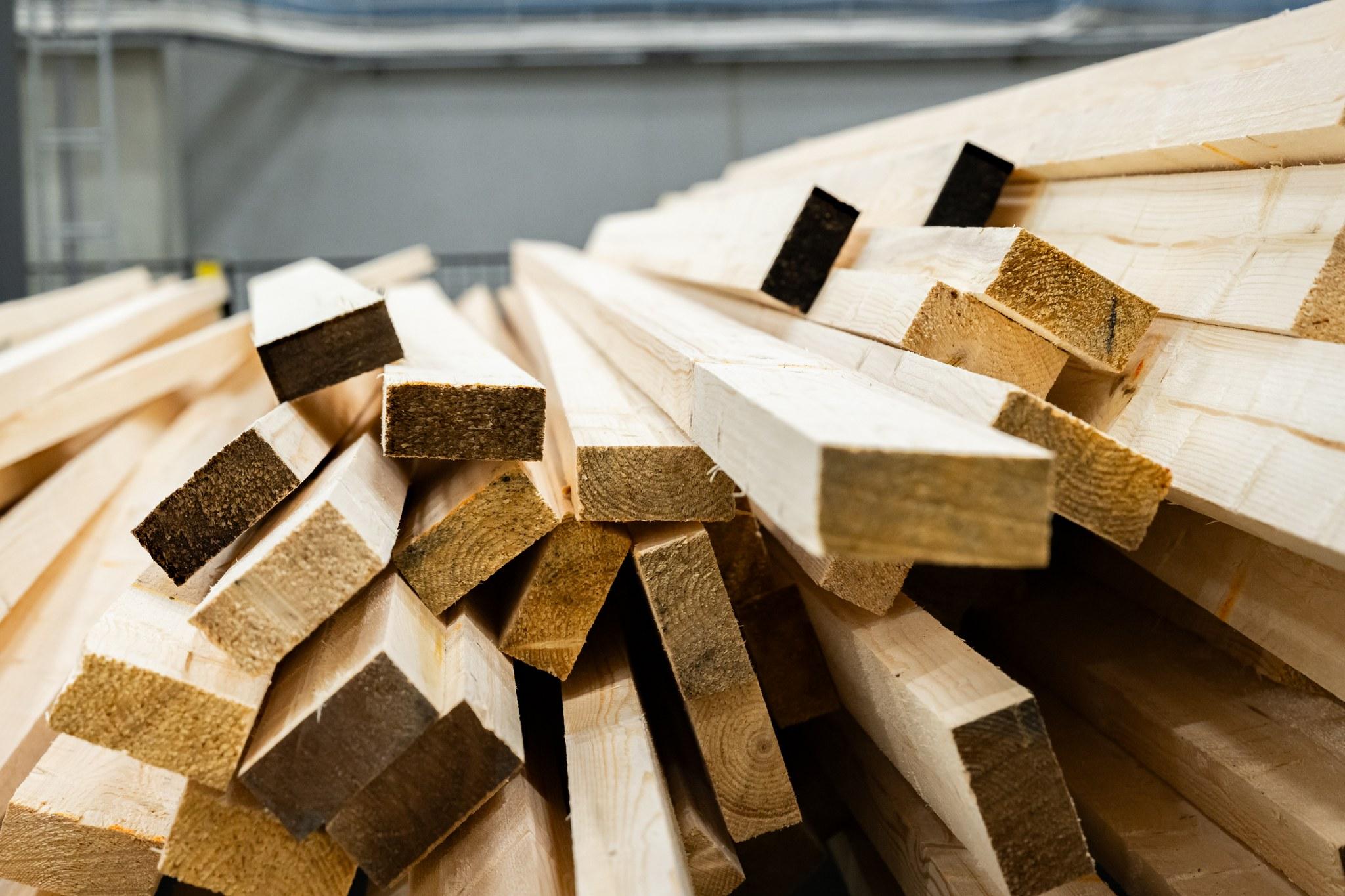
Considering climate change
We mitigate climate change and adapt to the future
Reducing climate emissions
- Reducing energy consumption and improving energy efficiency
- Reducing direct emissions from own operations (Scope 1 and 2)
- Reducing value chain emissions (Scope 3)
Wood products as carbon sinks – carbon handprint
- Climate-efficient products and solutions: increasing our customers’ carbon handprint with long-lasting wood products
- Positive climate impacts: renewable raw materials, reuse and recycling
- Understanding, measuring and reducing the environmental impact during the product’s life cycle; reducing the product-specific carbon footprint
| Theme | Objectives | KPI | KPI target Base year 2022 | 2023 | 2024 |
|---|---|---|---|---|---|
| Reducing climate emissions | 2024: Energy efficiency and reducing energy consumption | Energy intensity MWh/m3 Energy intensity MWh/lv | – 5% (2022: 0.60) – 5% (2022: 1,143 MWh/MEUR) | + 10% + 18% | –10% –4,4% |
| 2024: Increasing the share of renewable energy | % of renewable energy | Heat 99% (2022: 96%) | 97% | 97% | |
| 2024: Reducing emissions from our own operations | Scope 1 + 2 | -50% (2022: 22 252 tCO2eq.) | – 6% (market-based) | –72% (market-based) | |
| 2025: Reducing value chain emissions | Scope 3 | – 20% (2022: 166,104) | – 6% | –4,5 % | |
| Wood products as carbon sinks – carbon handprint | 2024: Increasing the carbon handprint tCO2-eq | Carbon dioxide bound to products tCO2-eq | +30% (2022: 310, 754) | + 3% | –12,40% |

Climate action is at the heart of creating value and competitiveness as well as helping our customers become successful
ESRS E1: Climate change